The Cooler Master MasterCase 5 Review
by E. Fylladitakis on August 27, 2015 9:00 AM EST- Posted in
- Cases/Cooling/PSUs
- Cooler Master
- mid-tower
- Case
- Freeform
The Exterior of the Cooler Master MasterCase 5
The MasterCase 5 is a modern design, based on simple shapes and geometric patterns. It appears based on the first Cooler Master Scout case, but it is more serious and elegant. The entirely of the case, metal and plastic parts alike, is sprayed with a satin black paint. Cooler Master did a fine job making sure that the paint is not significantly different between the plastic and metallic parts, creating a uniform, quality look. With a volume of 0.0659 m3 (65.9 liters), it is neither a small or large case as far as Midi-ATX towers are concerned, but do note that it is 23.5 cm (9.25") wide, which is significantly wider than typical ATX designs. It also tipped our scale at 10.4 kg, making it a fairly heavy case for the size.
The stock version of the MasterCase 5 has no windowed side panel, only the MasterCase Pro 5 does, but it is offered as an extra accessory. If purchased an installed, by default it will still be hiding the lowermost part of the case, where the PSU compartment is. If the system is very tidy, the black stripe hiding the PSU compartment can be removed, displaying the entirety of the system.
Cooler Master placed the front I/O ports and buttons at the top front of the case, on a tilted surface. Given that the case is rather tall, the position of the buttons and I/O ports clearly favors placement under a desk and makes the use of a windowed side panel questionable. The power-on button rests at the middle of the formation, with the 3.5 mm audio jacks above it and one 3.0 USB port on either side of them. A tiny square reset button can be seen to the right and a small HDD activity LED to the left.
The two handles at the top of the case appear to be plastic. Actually, their covers are plastic and the main frame of the handle is steel, directly attached to the main frame of the case too. They can easily handle the weight of the case and any system that may be installed inside it.
Removing the four large screws releases the metallic top cover of the case. The screw heads are very visually intrusive and made us wonder if the designer has never heard of countersunk screws. A simple nylon filter is placed beneath it; do not expect it to keep out too much dust. Two 120/140 mm fans can be installed on the metallic cover.
Cooler Master offers the top frame and cover of the MasterCase Pro 5 as an extra accessory for the MasterCase 5. It comes with the metallic frame that can fit two 120/140 mm fans, providing enough clearance for a liquid cooling radiator. Arguably, the MasterCase 5 looks much better with the extra top cover installed. The top cover does not block the handles and converts the area beneath the front handle into a simple storage department.
The rear of the MasterCase 5 reveals the position of the PSU compartment at the bottom of the case but is otherwise uninteresting for a modern design. There are no grommets or holes for custom liquid cooling solutions. A nylon filter is placed beneath the PSU fan intake and it can be removed by pulling it out towards the rear of the case.
At the bottom of the case, the feet resemble the handles found at the top of the case. They too are made of steel and attached to the main frame of the case, with plastic covers over them. The only difference is the long rubber feet on them that, strangely, appear somewhat worn on our brand-new sample.


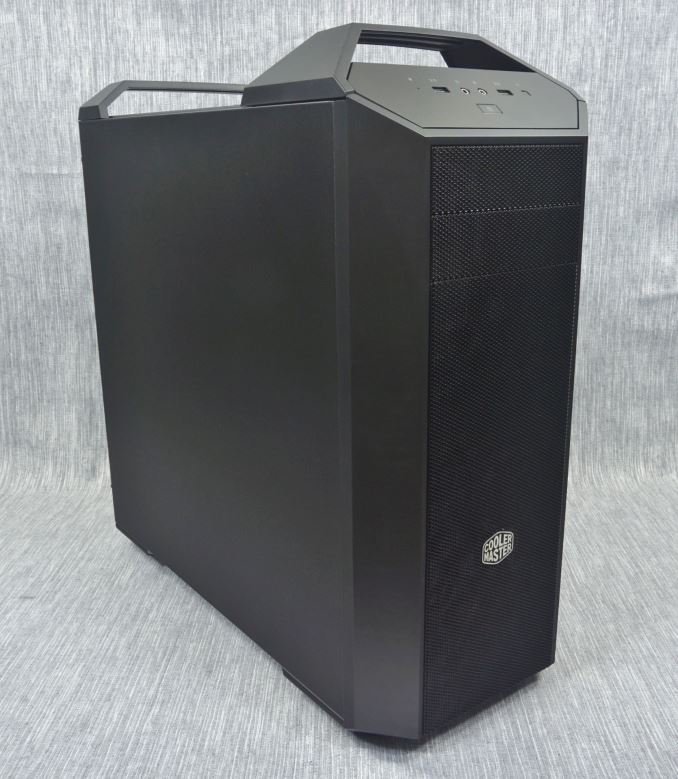
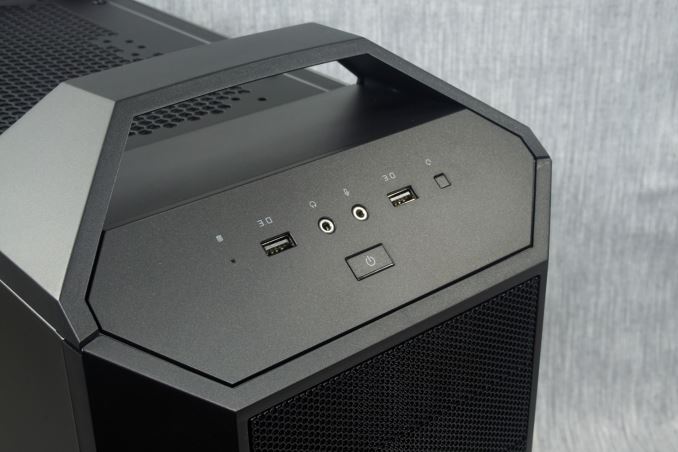


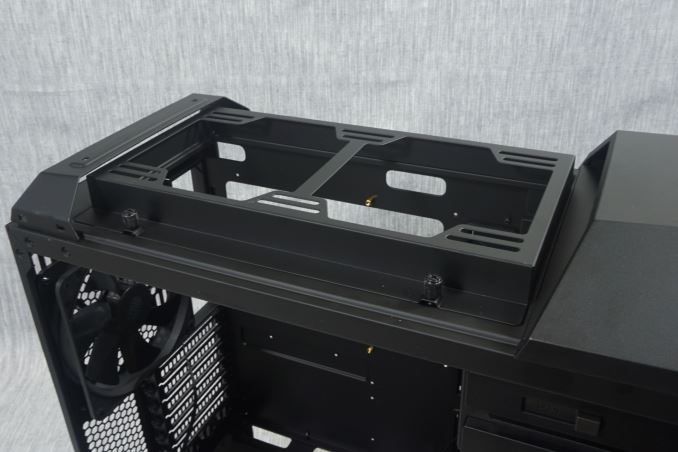
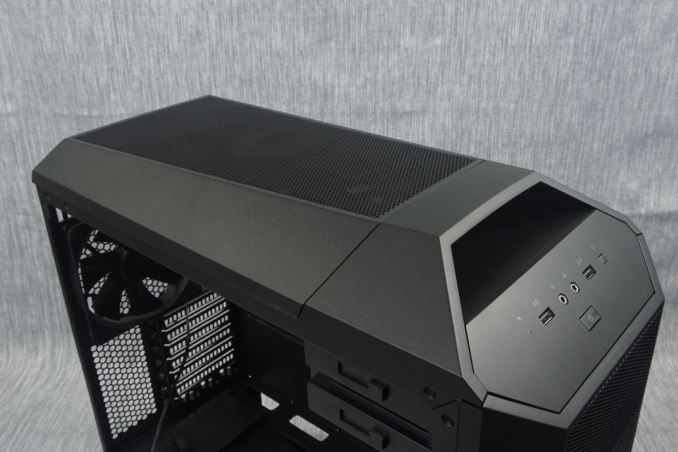
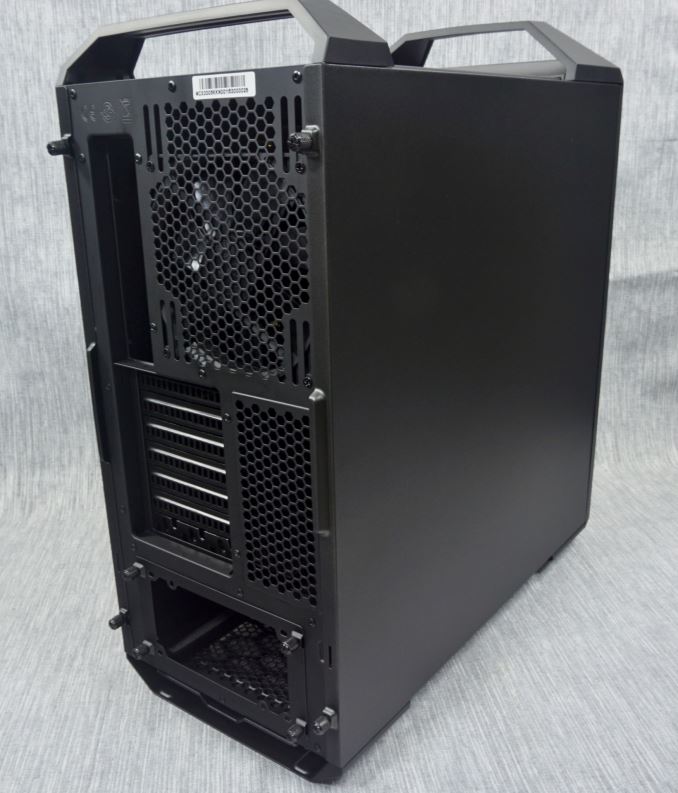
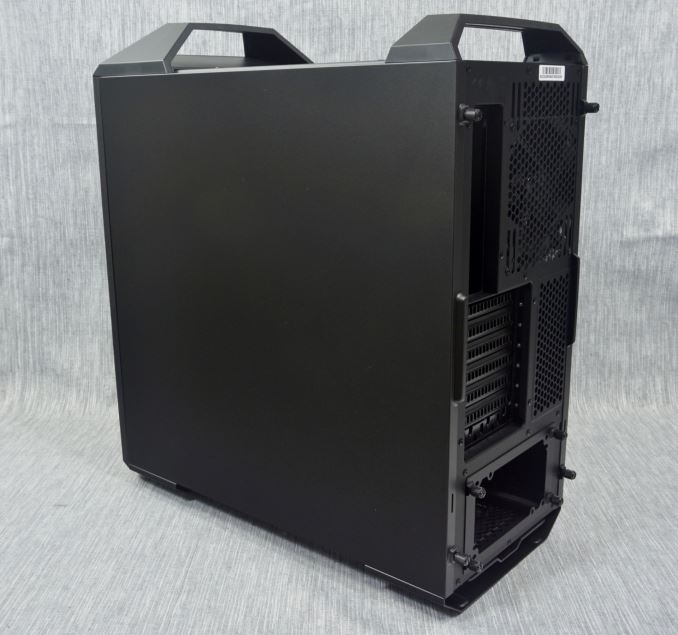
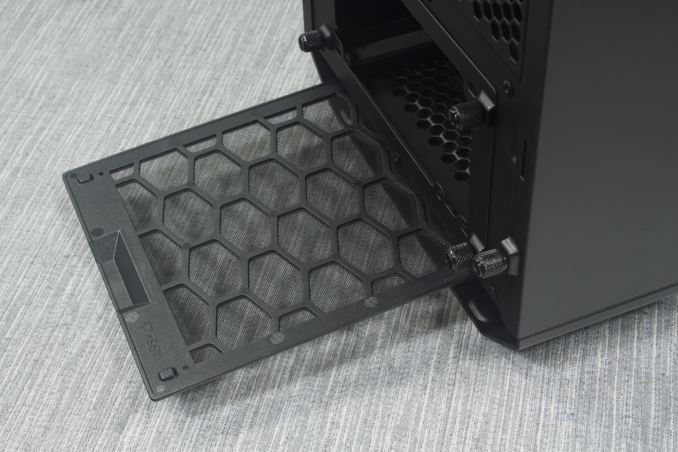
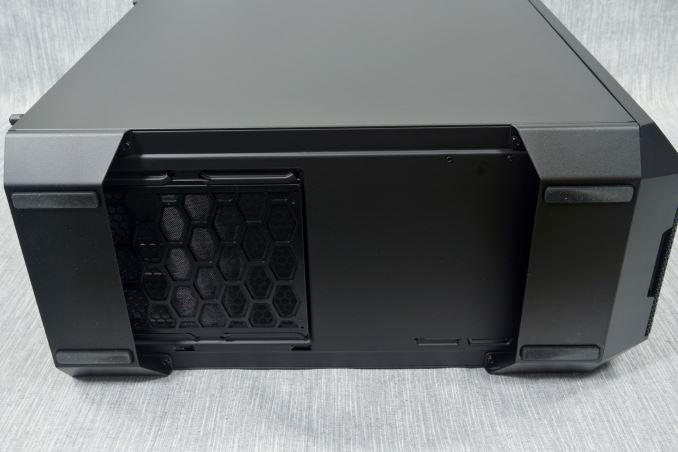
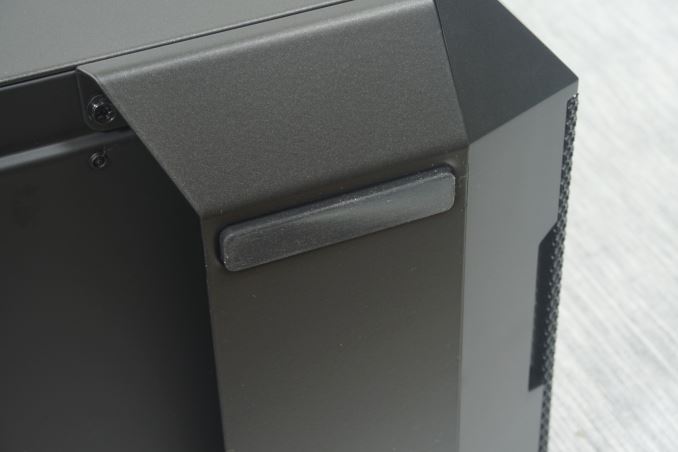








32 Comments
View All Comments
winterlord - Thursday, August 27, 2015 - link
how much does it weigh?BrokenCrayons - Thursday, August 27, 2015 - link
From the second page of the review - "It also tipped our scale at 10.4 kg, making it a fairly heavy case for the size."nmm - Thursday, August 27, 2015 - link
From where I'm sitting their "modular" approach looks a bit like they're just selling you a case that doesn't come with all the parts. I'm pretty sure my Fall Sky Lake build is still going into a Fractal Design Define R5 (or perhaps a Define Mini if they ever get around to updating it... and if anyone ever releases a micro ATX board that isn't riddled with useless SATA Express ports).freeskier93 - Thursday, August 27, 2015 - link
I'm sure the designers/engineers know very well what countersinking is, so well they also know countersinking into such thin sheet metal is not a good method. Even at a large 130* countersink there would be very little surface contact between the sheet and fastener.E.Fyll - Thursday, August 27, 2015 - link
The openings are made for screws with countersunk heads and the thin sheet metal, even with fans attached, has no weight that would cause problems with such screws, even if the contact surface is small.Besides, the thin sheet sits on the metallic frame and gravity does not go up.
freeskier93 - Thursday, August 27, 2015 - link
Taking a closer look at the pictures it looks they are dimpled, which would be the better method, so it is odd they used a big cheese head screw.'nar - Thursday, August 27, 2015 - link
I have to agree with the reviewer, and here are some reasons why. You can expand a case in any direction with optional components, except the rear panel with the motherboard connections. The top can not only have a radiator, but also padded external drive bays, Flash drive USB ports, additional buttons, fans controls, lighting controls, and such. The front can have a metal frame that screws to the existing frame to extend the case with new drive bays, radiator options, a closing door, thicker sound insulation and filtration. The bottom could have an additional power supply for high-power rigs and more drive bays. And the side panels could come with different window shapes and embedded lighting options, sleeves for the motherboard manual, hangars for headphones, or art-deco. This would all be designed to bolt onto a standard core frame size, so your core can be swapped for different configurations as well.Sounds good, but I have not made any CAD drawings to check any sizes or clearances to see if any of this would actually fit together in any aesthetically pleasing way. But I do desire a case with good sound absorption and air-filtration, water cooling, and hot-swap hard drive bays.
Taurus229 - Thursday, August 27, 2015 - link
If I were to spend $110.00 on a case I would want it to have what I feel is important to me, and not have to consider buying accessories to upgrade. Either it has it or it doesn't. It's that simple.sonny73n - Friday, August 28, 2015 - link
All PC cases lack of something very important to me - dust filter. I'm talking about real air filter, the one you have in your car, not some foam. Foam air filters can't block fine dust which in about a year will build up a nasty layer of dust on everything, especially on the fans and CPU heatsink. I had to modify my Antec case with 3 fans sucking air in from the front, behind a modified washable car air filter, and 3 blowing air out on top, side and back. It's been almost 2 years and no dust. No more worries of system overheats and annual cleanup caused by dust buildup on my OCed system. Yay ;-)marvdmartian - Friday, August 28, 2015 - link
Not sure....what exactly is the reason for handles on top of a case this size? Is it just for the coolness design factor? Haven't seen a LAN party in years, but I doubt people are lugging around cases like this much, any more.While it might have some nice features, for me, at least, the price point is too high, for what it's offering.